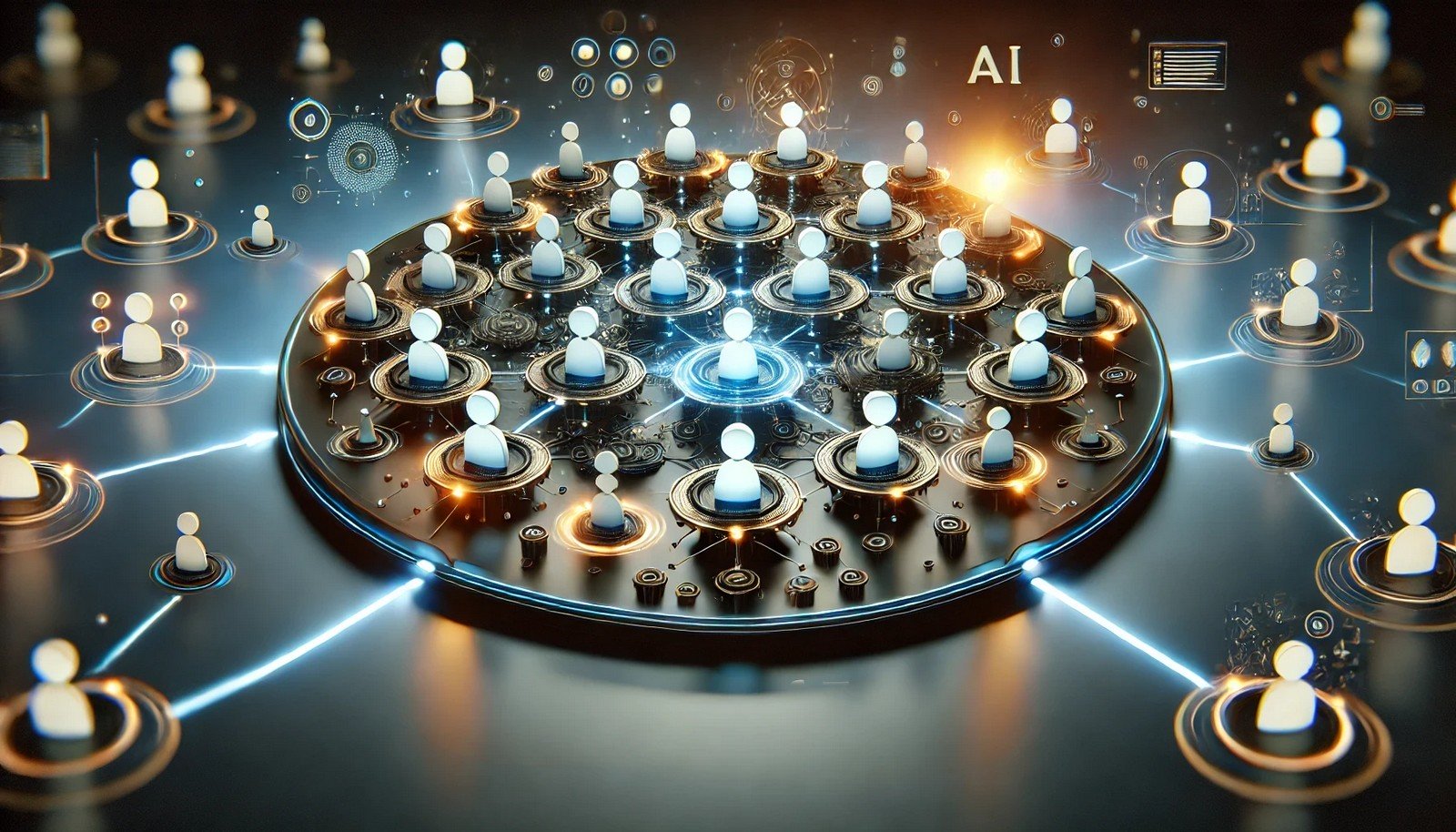Mixture of Experts

Quick Navigation:
- Mixture of Experts Definition
- Mixture of Experts Explained Easy
- Mixture of Experts Origin
- Mixture of Experts Etymology
- Mixture of Experts Usage Trends
- Mixture of Experts Usage
- Mixture of Experts Examples in Context
- Mixture of Experts FAQ
- Mixture of Experts Related Words
Mixture of Experts Definition
The Mixture of Experts (MoE) is an AI model architecture involving multiple smaller, specialized models—often called "experts"—which collaboratively handle different segments of data based on their strengths. A “gating” mechanism intelligently routes tasks to the relevant experts, optimizing both accuracy and efficiency. MoEs are highly advantageous in tasks requiring diverse approaches, as they enable data to be processed by the expert model best suited to specific tasks, reducing computational load while improving results.
Mixture of Experts Explained Easy
Imagine a team where each person is very good at one thing. If you need help with math, you ask the math expert. If it’s science, you go to the science expert. In a Mixture of Experts, the computer is doing this with lots of little “expert” programs that each handle different tasks. It picks the right expert for the job, so things get done faster and more accurately.
Mixture of Experts Origin
The Mixture of Experts concept originates from early AI approaches where combining the outputs of multiple models was explored to boost accuracy. MoE’s initial applications in statistical models aimed to divide complex tasks among specialized functions. With advancements in neural networks, this concept evolved into a dynamic architecture that became highly scalable and efficient, especially in deep learning frameworks.
Mixture of Experts Etymology
The term “Mixture of Experts” highlights the idea of diverse, specialized models or "experts" that combine their capabilities to tackle various parts of complex tasks, akin to a team with diverse skills.
Mixture of Experts Usage Trends
Recently, the Mixture of Experts architecture has gained popularity as large-scale AI systems require efficient resource allocation to handle diverse data. MoE's adaptive, efficient nature has spurred its use in fields like natural language processing, where specialized experts improve language comprehension and translation. Additionally, technology companies implement MoE in computational-heavy models to minimize resource usage while enhancing performance.
Mixture of Experts Usage
- Formal/Technical Tagging:
- AI Model Architecture
- Neural Networks
- Deep Learning - Typical Collocations:
- "mixture of experts model"
- "expert routing in AI"
- "MoE architecture"
- "gated expert models"
- "efficient deep learning"
Mixture of Experts Examples in Context
- A mixture of experts model might route an image classification task to a specialist in animal identification when recognizing animals in photos.
- In natural language processing, an MoE might direct queries about finance to an expert trained on financial documents.
- Large language models use a mixture of experts approach to process complex texts efficiently, activating only the necessary parts of the model.
Mixture of Experts FAQ
- What is a mixture of experts?
A mixture of experts is an AI architecture where different expert models specialize in specific tasks, improving overall performance. - How does MoE work?
It uses a gating mechanism to route data to the most suitable expert for the task, improving accuracy and efficiency. - Why are MoE models efficient?
MoE models activate only relevant experts, reducing unnecessary computational load. - Where is MoE commonly used?
MoE is used in natural language processing, image classification, and large language models. - What is the role of a gating mechanism?
The gating mechanism directs data to the right expert model based on its needs. - What are the challenges with MoE?
Challenges include ensuring the gating mechanism is effective and managing the computational cost of multiple experts. - How does MoE differ from other AI models?
Unlike traditional models, MoE divides tasks among specialized models for more efficient processing. - What are the benefits of MoE in deep learning?
It enhances model scalability, precision, and adaptability in processing diverse data. - How is MoE applied in language models?
It helps large language models handle complex text by routing tasks to suitable experts. - Is MoE suitable for real-time applications?
With optimizations, MoE can handle real-time data by quickly activating relevant experts.
Mixture of Experts Related Words
- Categories/Topics:
- Machine Learning
- Model Architecture
- Deep Learning
Did you know?
In 2021, Google’s Switch Transformer, a model built on the Mixture of Experts principle, achieved remarkable efficiency, requiring far fewer computational resources to perform tasks compared to traditional transformer models. This marked a significant advancement in scalable AI models, inspiring further research into MoE architectures.
PicDictionary.com is an online dictionary in pictures. If you have questions or suggestions, please reach out to us on WhatsApp or Twitter.Authors | Arjun Vishnu | @ArjunAndVishnu

I am Vishnu. I like AI, Linux, Single Board Computers, and Cloud Computing. I create the web & video content, and I also write for popular websites.
My younger brother, Arjun handles image & video editing. Together, we run a YouTube Channel that's focused on reviewing gadgets and explaining technology.



Comments powered by CComment